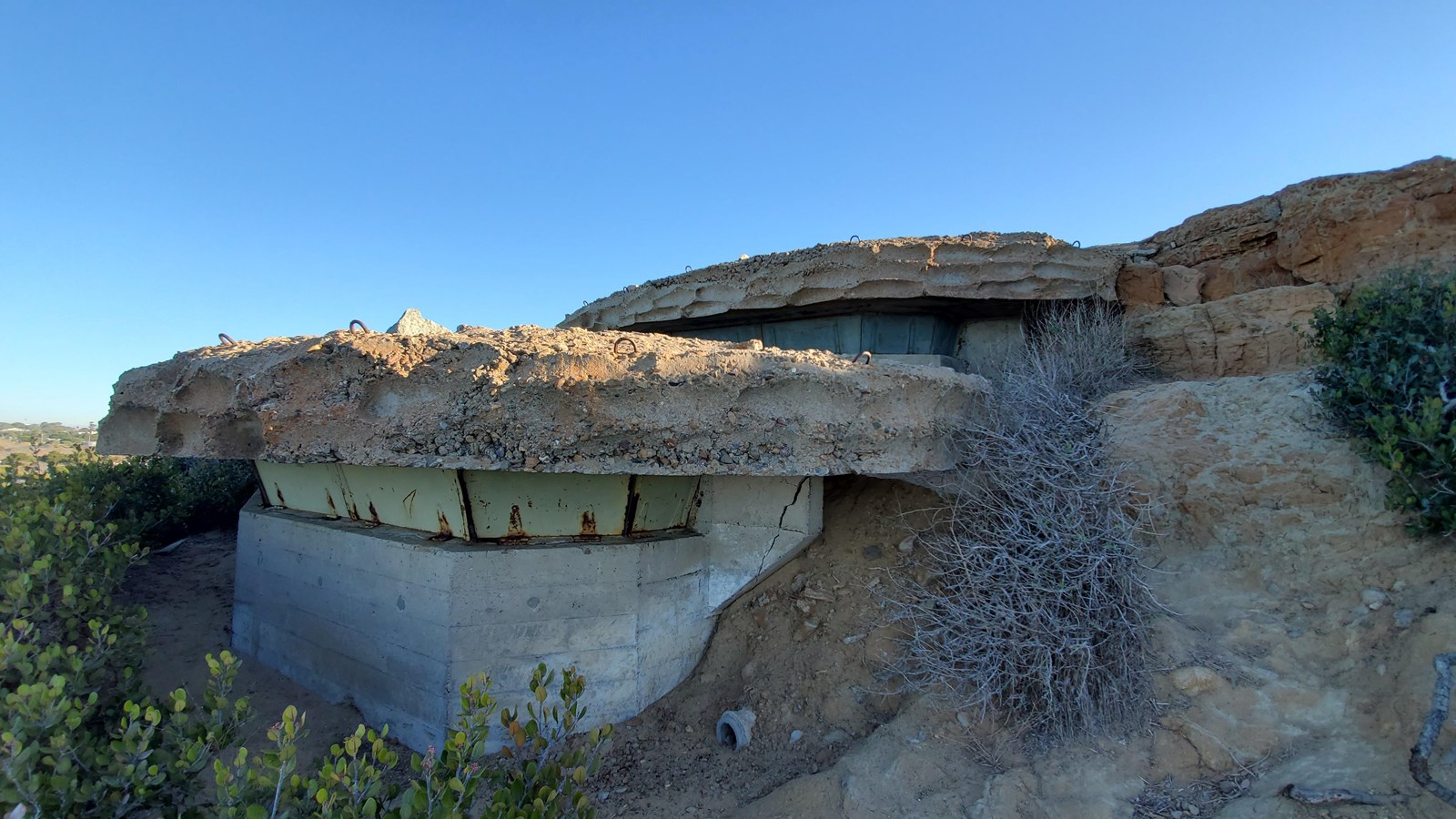Last updated: February 12, 2021
Place
Fire Control Station (Battery Ashburn)

NPS Photo / T. Jordan
Cellular Signal, Scenic View/Photo Spot
History
This fire control station bunker was built during World War II as part of the complex for Battery Ashburn. The upper bunker served the command post for the battery while the lower bunker was one of five observation posts used to triangulate firing solutions for its two massive guns. Soldiers here spent their days and nights observing the ocean, practicing firing drills, and biding their time for an attack from Imperial Japan that, fortunately, never came.
There are 3 chambers in this bunker. Down the exterior stairs, a door leads to the battery commander’s station, where firing orders were given. Beneath that chamber is a bunk room for staff assigned to this post. The bunk room connects to the lower base-end station room. This is where targets were tracked and targeting triangulation data generated. This station and the other 4 base-end stations in the area reported their observations, and their combined information allowed accurate aiming of the guns of Battery Ashburn.
San Diego has had coastal defenses in some form or another, nearly since its inception. The earliest fort arrived with the construction of El Castillo de San Joaquin near modern-day Ballast Point, in 1798. Since then, there has been a long tradition of defending San Diego’s harbor with fortified gun emplacements. Battery Ashburn was the last and grandest of these defensive artillery batteries. When it came online in 1944, it was the largest coastal defense artillery in San Diego history; however, its reign was short-lived and it was decommissioned after the war ended. The advent of nuclear weapons rendered traditional coastal artillery defenses obsolete
Did You Know?
- The main battery sported two massive 146 ton cannons, each 68’ long, with a 16” diameter barrel.
- When the gun barrels were transported to the Battery Ashburn for assembly, they were so heavy that the trucks transporting them left permanent 3” deep ruts in the road.
- Each gun at Ashburn fired a 2,340 lbs. (1,061 kg) shell up to 30 miles (48 km) out to sea at approximately 2,500 feet (762 meters) per second! Imagine being on the receiving end of that – that’s the weight of a young adult Pacific Walrus flying at you at over twice the speed of sound… or 450 Chihuahuas if you prefer dog measurements.
Learn More
Photographic Tour of the Base End Station
Military History and Coastal Defense
The Guns of San Diego - Historic Resource Study
Access
The exterior portion of this bunker is accessed by a dirt trail that connects to the asphalt road around the lighthouse grounds or by a dirt trail with stairs near the Coast Defense Exhibit.
Please stay on the trail and DO NOT CLIMB ON THE BUNKER.
While this building is usually closed to the public, it is periodically opened for viewing. Check our park event calendar to see when the next open bunker session is scheduled! The top portion of the bunker's interior is accessed by a small flight of stairs. The lower levels of the bunker are accessed by a vertical ladder and appropriate footware is required.
